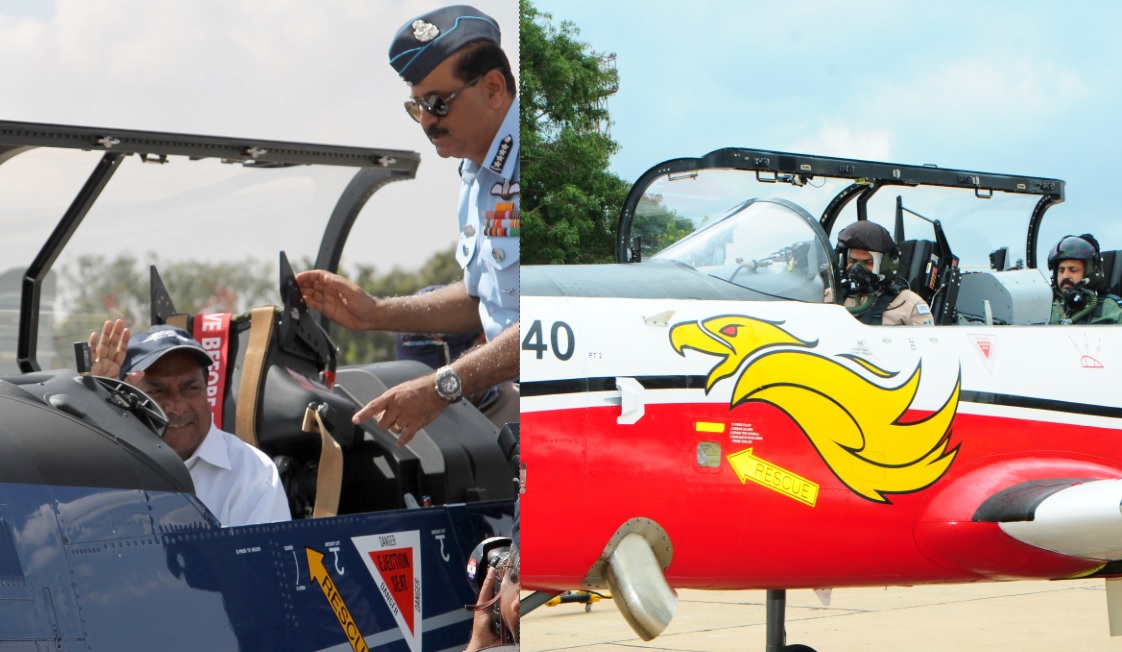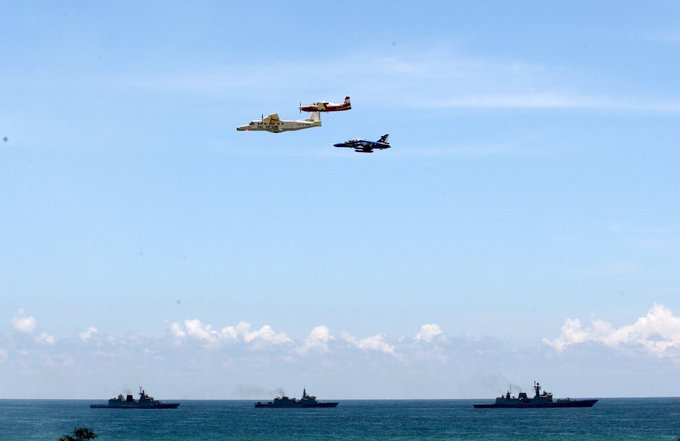
In the annals of difficult indigenous aerospace projects, HAL’s HTT-40 basic propeller trainer aircraft has had a particularly rough birthing. A full three years before a prototype of the aircraft got off the ground, its intended customer, the Indian Air Force, was busy petitioning the Ministry of Defence to shut down the project. The unconcealed hostility broke cover at the Aero India show in 2013 when the IAF let loose in public at HAL’s self-funded trainer aircraft program, even going so far ignoring the unveiling of an HTT-40 mock-up. When then IAF chief Air Chief Marshal N.A.K. Browne thundered irritably that his pilots didn’t ‘want or need’ the HTT-40, it was widely believed that the trainer aircraft was dead on the ground. Browne had his reasons at the time, given the desperate situation concerning India’s basic trainer fleet. We’ll get into those shortly.
But things couldn’t have changed more dramatically in the seven years since that very public trading of charges. On Thursday, when the Indian Air Force’s new chief took an HTT-40 prototype into the air for an hour, it was historic in a very real sense. Air Chief Marshal Rakesh Bhadauria had just become the first IAF chief to fly in an HAL prototype. And in doing so, he had also put to rest all doubts about the air force’s interest in the aircraft.

HAL expects that the IAF chief’s flight in its HTT-40 prototype clears the decks for paperwork for the supply of up to 106 aircraft to the Indian Air Force. The HTT-40 first flew in 2016, three years after the IAF wanted it shelved.
To be sure, the IAF’s belated affection for the HTT-40 isn’t charity. Although delayed, the aircraft has recently turned many tough test-flight corners, rapidly gaining the IAF’s confidence for the crucial basic training role it will occupy. In September-October this year, the same HTT-40 prototype that Bhadauria flew, completed crucial spin tests. An HAL statement says Bhadauria personally assessed the spin and stall recovery characteristics of the aircraft during his hour-long sortie over Bengaluru yesterday.
‘[The IAF chief] expressed his satisfaction with the aircraft performance and appreciated the design, project and flight test teams for having achieved the commendable progress,’ HAL said in a statement, quoting the IAF chief as having said, ‘The project now needs to be speeded up for certification and HAL must target setting of modern manufacturing facilities with high production rate from the beginning.’
HAL Director of Engineering & R&D Arup Chatterjee said, ‘The Air Chief’s support enables the indigenous capabilities of the defence organisations like HAL to rise to the occasion and meet the desired metrics in quality, cost and time lines. Details for the production facilities required for producing HTT-40 in desired numbers have concurrently been worked out and HAL’s production will match the requirements of the IAF.”

The avowed bonhomie is rare. And it comes after a particularly troublesome year in which the Rafale political scandal pitted HAL squarely against its mothership and principal customer — the government and Indian Air Force — with the opposition Congress Party even alleging that HAL had been cheated out of manufacturing and offsets opportunities in the 2016 Rafale deal. HAL had found itself in an awkward position, embarrassed at converted into a political football, but also seeing the conflict as an opportunity to push its agenda.
Apart from the HTT-40 proving itself technologically, the IAF’s interest was also catalysed by an important compulsion. A corruption investigation into Swiss firm Pilatus Aircraft killed the IAF’s option to purchase more PC-7 Mk.II basic trainers — the current IAF basic training mainstay — beyond the 75 already supplied. It must be said that the IAF was forced to import the Swiss basic trainers owing to the dangerous spiral in safety issues of the erstwhile HPT-32 basic trainer that finally led to the fleet’s grounding. With a back-up program nowhere on the horizon (the HTT-40 at the time was only on paper), the IAF has to globally tender for basic trainers, finally choosing the Pilatus aircraft. The IAF’s misgivings with the HTT-40 proposal may also have had to do with the parallel HJT-36 intermediate (Stage 2) trainer program entering a development stall and finally failing to deliver.
To be sure though, the IAF was warming to the HTT-40 long before the corruption investigation into the Pilatus deal began and saw the firm banned for a year recently.
‘The HTT-40 has completed all major test points and meets the Preliminary Staff Qualitative Requirements (PSQR) issued by Air Headquarters for the BTA program. HTT-40 has successfully completed stalls, engine relights, inverted flying, acrobatic flying and systems testing. The Basic Operational clearance and user evaluation trials readiness is expected soon. The design team at HAL is motivated with the Air Chief’s sortie,’ HAL said in its statement.
HAL has conducted a series of demo flights for foreign customers in the last two years, and will be focusing on the foreign market in parallel.

Absolutely courageous move by HAL in the early 2010….2013 to develop the trainer without IAF support. That has paid off. HAL is India’s jewel that has the capability to deliver immense value to Indian defence. Rafale must be made by HAL as also other critical platforms.